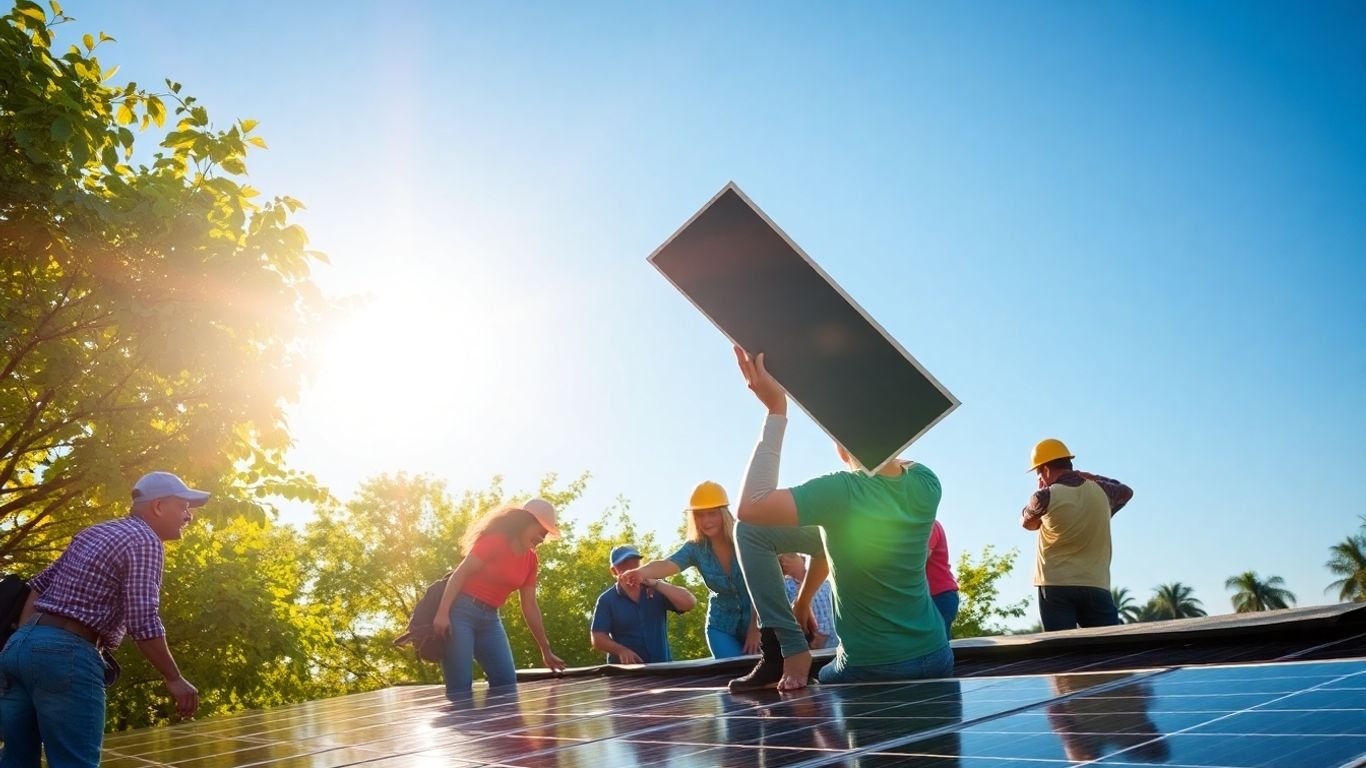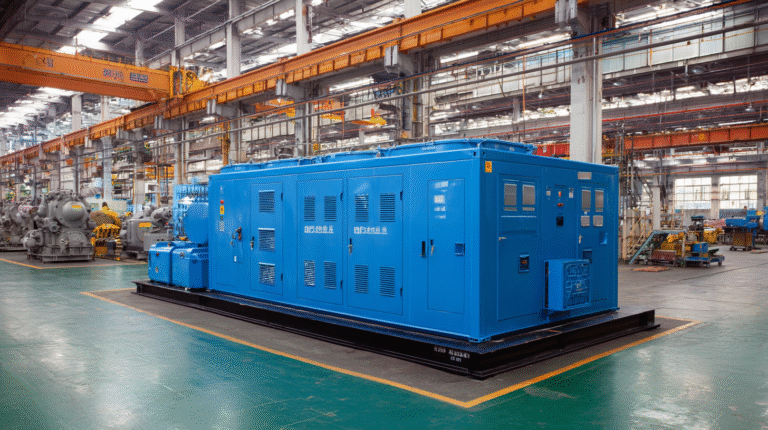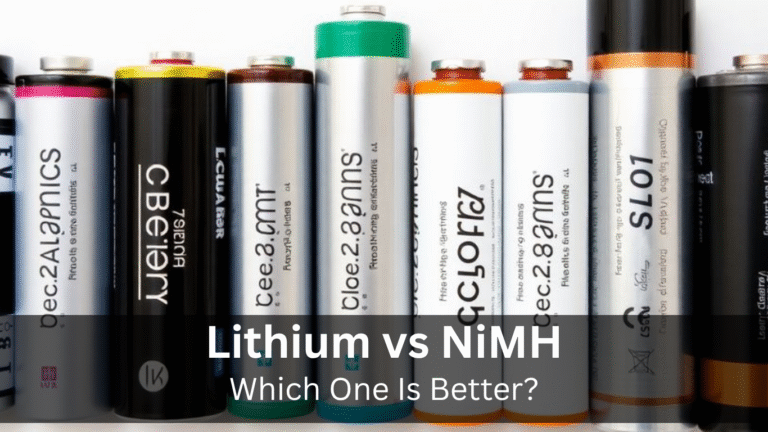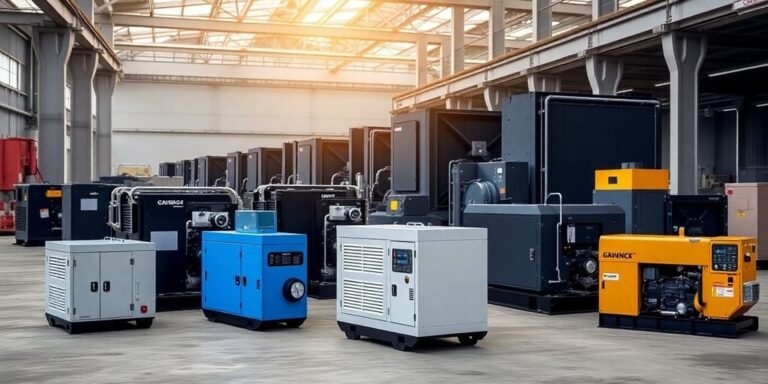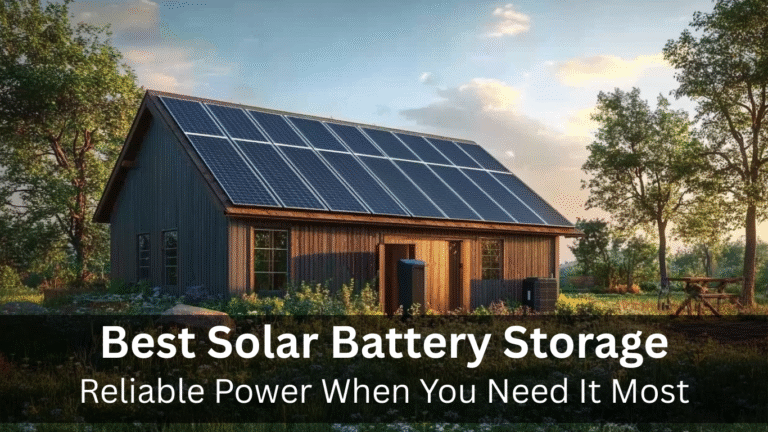Why Community Energy Is the Future of Sustainable Power
Thinking about how we get our power is a big deal these days. We’re all looking for ways to be more self-sufficient and kind to the planet. Community energy is one of those ideas that’s really starting to catch on. It’s all about local groups coming together to generate and share their own clean electricity. This guide will break down what community energy is all about, why it’s a smart move, and how it can actually make our neighborhoods stronger and more affordable.
Key Takeaways
- Community energy models, like community solar, let groups share in renewable power generation without needing individual installations.
- Going local with energy can mean more control over our power supply, better local economies, and a cleaner environment.
- Having local energy sources can make communities more reliable during power outages and less dependent on faraway supplies.
- Participating in community energy can lead to lower electricity bills and create local jobs, boosting the community’s finances.
- Community energy projects help more people access clean power, raise awareness about sustainability, and build stronger local connections.
Understanding Community Energy Models
When we talk about community energy, we’re really looking at different ways people in a local area can team up to generate and use their own power. It’s a shift from just relying on the big power companies to having more say in where our electricity comes from. These models are all about bringing energy generation closer to home.
Defining Community Solar Projects
Community solar is a setup where a group of people, or even businesses, can subscribe to or invest in a shared solar energy system. Think of it like a neighborhood garden, but for electricity. Instead of everyone needing their own solar panels on their roof – which isn’t always possible, especially if you rent – you can buy a share of a larger solar farm.
This farm is usually built somewhere nearby, and the power it generates is sent to the local grid. You then get credits on your electricity bill based on how much you’re subscribed to. It’s a way to get the benefits of solar power without the hassle of installing panels yourself. You can find out more about these options by looking into community solar programs.
Differentiating Community and Utility Solar
It’s easy to get community solar and utility solar mixed up, but they’re quite different. Utility solar refers to the massive solar farms that big power companies build. They generate a ton of electricity, but it all goes into the main grid, and you don’t really have a direct connection to it. You just pay your regular bill, and some of that power might be solar.
Community solar, on the other hand, is more hands-on. You’re directly participating, often with a specific project in your area. The key difference is who benefits directly and how. With community solar, you get direct savings on your bill and a clearer connection to renewable energy. Utility solar is more about the utility company meeting its broader renewable energy goals.
Here’s a quick breakdown:
- Community Solar: Shared ownership or subscription, direct bill credits, accessible to renters and homeowners, localized benefits.
- Utility Solar: Owned by utility companies, power goes to the general grid, no direct consumer savings or connection, large-scale.
Exploring Shared Ownership Structures
Within community energy, there are a few ways people can get involved. Sometimes, a third-party company builds and manages the solar farm, and you just subscribe to get power from it. This is often the easiest way to get started, as there’s usually no big upfront cost. Other times, the community itself might form a co-op or a special purpose entity to own and operate the solar project. This means the people in the community have more control and the profits stay local. It really depends on the project and what works best for the people involved. The goal is always to make renewable energy accessible and beneficial for everyone in the community.
The idea behind these models is to democratize energy. It’s about giving people more choices and making sure that the move towards cleaner energy also benefits the local economy and environment directly, not just as a byproduct of large-scale operations.
Benefits of Localized Power Solutions

When we talk about community energy, we’re really talking about taking back control of where our power comes from. It’s about more than just flipping a switch; it’s about building a more stable, affordable, and cleaner energy future right where we live. This shift away from relying solely on big, distant power plants brings a whole host of advantages that ripple through our daily lives and our local economies.
Achieving Energy Independence
One of the biggest draws of community energy is the idea of energy independence. Think about it: instead of being completely tied to the whims of large utility companies and fluctuating global fuel prices, communities can generate their own power. This means a more predictable and stable energy supply, especially important when you consider how often we hear about grid issues or price hikes. By tapping into local renewable resources like the sun or wind, communities reduce their reliance on external energy sources, making them more self-sufficient. This local control means fewer worries about supply chain disruptions or geopolitical events impacting our electricity. It’s about building a resilient energy system that serves the community first and foremost.
Driving Economic Development
Localized power solutions are also fantastic for the local economy. When a community invests in its own energy projects, like a shared solar farm, that money tends to stay local. We’re talking about jobs – people to install the panels, maintain the equipment, and manage the projects. These aren’t just temporary construction gigs; they can be long-term positions that support families. Plus, businesses in the area might see increased demand for their services related to these projects. It’s a way to create new economic opportunities right in our own backyard.
Here’s a quick look at how that economic boost can play out:
- Job Creation: From installation and maintenance to project management and sales, local energy projects create diverse employment opportunities.
- Local Spending: Money saved on energy bills by residents and businesses can be spent on other local goods and services, stimulating further economic activity.
- Tax Revenue: Community energy projects can contribute to local tax bases, providing funds for public services like schools, roads, and parks.
Enhancing Environmental Sustainability
Of course, we can’t talk about renewable energy without mentioning the environmental perks. Community energy projects are typically built around clean, renewable sources like solar and wind. This means less reliance on fossil fuels, which in turn leads to a significant reduction in greenhouse gas emissions. Switching to cleaner energy sources directly combats climate change and improves the air quality in our neighborhoods. It’s a tangible way for communities to contribute to a healthier planet for future generations. It’s a win-win: cleaner air and a more stable climate, all powered by local resources.
Community Energy for Enhanced Resilience
When the main power grid hiccups, or worse, goes down completely, what happens to your town? It’s a question more and more folks are asking. Community energy projects, especially those using solar, can really step up here. They create a local power source that can keep running even when the big grid fails. Think about it: your streetlights, the local store, maybe even the town hall, still powered up.
It’s about building a more robust system, one that doesn’t rely solely on distant power plants and miles of transmission lines that can be easily disrupted. This local power means less vulnerability to storms, equipment failures, or even bigger, more widespread grid issues. It’s a way to reclaim a bit of control over our energy supply and make sure things keep running when it counts.
Strengthening Grid Independence
Community energy models are all about decentralizing power. Instead of one giant power plant serving thousands, you have smaller, distributed sources. This makes the whole system less fragile. If one part of the grid goes down, others can keep operating. It’s like having multiple smaller engines instead of one big one; if one sputters, the others can pick up the slack. This independence from a single, massive infrastructure is a big deal for keeping the lights on.
Providing Backup Power Solutions
Many community energy setups are designed with resilience in mind. Some can store energy in batteries, acting like a giant backup power pack for the local area. This stored energy can be used during peak demand times or, more importantly, when the main grid is unavailable. It means essential services can continue operating, and homes can maintain basic power, reducing the chaos that often comes with extended outages. It’s a practical way to ensure continuity.
Mitigating Supply Chain Vulnerabilities
Think about how much we rely on long, complicated supply chains for everything, including energy. Fuel has to be transported, equipment manufactured far away and shipped. Community energy, particularly when it uses local resources like sunshine, shortens that chain dramatically. It reduces the points of failure. We’re not as dependent on fuel deliveries or the smooth operation of distant factories. This local approach makes our energy supply more secure and less susceptible to disruptions happening halfway across the world. It’s about building a more self-sufficient energy future for your area, which is a key part of community resilience.
Building local energy capacity means we’re not just passively receiving power; we’re actively generating it close to home. This shift makes our communities less exposed to the risks associated with large, centralized energy systems and the complex global supply chains they often depend on. It’s a move towards greater self-reliance and stability in our energy supply.
Financial Advantages of Community Energy
When we talk about community energy, it’s not just about being green or feeling good about helping the planet. There are some real, tangible financial upsides that make these projects super attractive. Think about it: instead of sending all your hard-earned cash to a big utility company, a good chunk of that money can stay right here in our own neighborhoods. That’s a pretty sweet deal, if you ask me.
Reducing Household Energy Bills
This is probably the most direct benefit folks see. By subscribing to a community solar project, you’re essentially buying a share of the electricity generated by a larger solar farm. You don’t have to put panels on your own roof, which is a huge plus for renters or people whose homes aren’t suitable for solar. What happens is you get credits on your regular electricity bill for the energy your share of the solar farm produces. These credits usually end up being worth more than what you pay for your share, meaning your monthly bill goes down. It’s not a magic trick; it’s just a smarter way to get power. Many community solar programs guarantee a certain percentage of savings on your electricity costs. For example, if you’re saving 10% or 15% on your bill every month, that adds up significantly over a year. It’s like getting a permanent discount on your power.
Generating Local Tax Revenue
Beyond individual savings, these projects are good for the town’s wallet too. When a community solar farm is built, it’s a new piece of infrastructure. This means it can be taxed, just like any other business or property. That tax money can then go towards funding local services – think schools, roads, parks, or whatever else your community needs. It’s a way to bring in new revenue without necessarily raising taxes on residents. Plus, the construction and ongoing maintenance of these solar farms often create local jobs, which also boosts the local economy through wages and spending.
Minimizing Upfront Investment Costs
This is a big one, especially when you compare community solar to putting panels on your own house. Installing solar panels on your own property can cost thousands, even tens of thousands, of dollars. That’s a massive barrier for a lot of people. With community solar, you typically just subscribe to a program. There’s usually no big upfront payment required. You might pay a small monthly subscription fee, but it’s generally much less than the cost of installing your own system, and often less than your current electricity bill. This makes clean energy accessible to a much wider range of people, not just those who can afford a large initial investment. It really levels the playing field.
Empowering Communities Through Local Energy
When we talk about community energy, it’s really about giving people more say in where their power comes from and how it’s used. It’s a way to move away from just being passive consumers and become active participants in our energy future. This shift is more than just about electricity; it’s about building stronger, more self-reliant neighborhoods.
Increasing Access to Renewable Energy
One of the biggest wins with community energy projects is that they open the door for more people to use clean power. Not everyone can put solar panels on their own roof, maybe due to shade, renting, or just the upfront cost. Community solar projects fix that. They let folks subscribe to a share of a larger solar farm, getting the benefits without the hassle of installing anything themselves. This means more households and businesses can tap into solar energy, even if they couldn’t before. It’s a practical way to get more renewable energy onto the grid and into our homes.
Fostering Local Job Creation
These local energy initiatives are also pretty good for the local economy. Think about it: installing solar panels, maintaining them, and managing the projects all create jobs right in the community. These aren’t just temporary construction gigs; they can be ongoing roles in operations and management. Plus, when money is spent on local projects, it tends to stay local, supporting other businesses and services. It’s a nice cycle that helps the whole area.
Promoting Education and Awareness
Beyond the practical benefits, community energy projects serve as a real-world classroom. They help people understand how renewable energy works and why it’s important. When neighbors get together to build and manage a solar project, they learn a lot. This shared experience can spark more interest in sustainability and encourage people to adopt other green practices in their own lives. It builds a collective understanding and a shared commitment to a cleaner future. It’s about more than just watts and volts; it’s about building a community that’s informed and invested in its own well-being. This kind of local control over energy resources can lead to greater energy independence and a more stable power supply for everyone involved.
Implementing Community Energy Initiatives

Getting a community energy project off the ground takes some planning, but it’s totally doable. Think of it like starting a neighborhood watch, but for your electricity. You’ve got a few main ways people get involved, and figuring out which one fits your community best is the first step.
Navigating Subscription Models
This is a really popular way to get into community solar without having to put panels on your own roof or pay a ton upfront. Basically, you sign up to get a share of the power generated by a larger solar farm nearby. It’s like buying a subscription to a service, but instead of Netflix, you’re getting clean energy.
- Pay-as-you-go: You pay a monthly fee for your share of the energy. This is often less than what you’d pay your regular utility.
- Savings: Most subscription models promise savings on your electricity bill right from the start. The exact amount can vary based on how much energy you use and the specific project.
- No installation hassle: You don’t need to worry about installing anything on your property. The solar farm handles all of that.
The key is to read the fine print. Understand how the savings are calculated, what happens if you move, and the length of the contract. It’s not complicated, but you want to know what you’re signing up for.
Identifying Local Project Opportunities
So, where do these solar farms actually pop up? Often, they’re built on unused land, like old industrial sites or even large commercial rooftops. Sometimes, local governments or non-profits will identify these spots and work with developers.
Here are some places to look for potential projects:
- Underutilized land: Think vacant lots, brownfields, or even large, flat commercial building roofs.
- Community centers or schools: These buildings often have large roof spaces that could host solar.
- Partnerships with local businesses: Businesses might be willing to host a solar array on their property in exchange for a share of the energy or a lease payment.
It’s about finding spaces that can generate power without taking up valuable land needed for housing or agriculture. The goal is to make the most of what’s already available in your area.
Partnering for Sustainable Growth
No one person or group can usually do this alone. Building a successful community energy project means working with others. This could involve:
- Local government: They can help with permits, zoning, and sometimes even provide incentives.
- Solar developers: These companies have the technical know-how and capital to build and manage the solar farms.
- Community organizations: Groups focused on environmental issues or local development can rally support and ensure the project benefits everyone.
- Financial institutions: Banks or credit unions might provide loans or investment opportunities.
Finding the right partners is key to making sure the project is financially sound and truly serves the community’s needs. It’s a team effort to bring clean, local energy to life.
The Road Ahead: Powering Our Future, Together
So, we’ve talked a lot about how community energy, especially solar, can really change things for the better. It’s not just about getting electricity; it’s about taking back some control, saving a bit of cash, and doing right by the planet. Whether it’s a big community solar farm or smaller local projects, the idea is simple: work together, use what nature gives us, and build a more stable energy future for everyone. It’s a big shift, for sure, but one that puts power back into our own hands, literally. Let’s keep exploring these options and see how we can make our communities stronger and greener, one watt at a time.
Frequently Asked Questions
What exactly is community energy?
Community energy is like a neighborhood power club! Instead of everyone getting their own tiny solar panel, a group of people in a community team up to build or subscribe to a bigger solar farm together. This makes clean energy, like solar power, more reachable and affordable for everyone, even if you can’t put panels on your own roof.
How does community solar help save money?
Imagine sharing the cost of a big pizza instead of everyone buying their own small slice. Community solar works similarly! By sharing the cost of a large solar installation, everyone involved pays less than if they were to get their own system. Plus, you often get credits on your electricity bill for the clean energy produced, which lowers your monthly costs.
Can community energy help if the power goes out?
Yes, community energy projects can make our power supply more reliable. Because the energy is generated locally, it’s less likely to be affected by big problems far away. Some community projects can even provide backup power, meaning your lights can stay on even when the main power grid has issues.
Is community energy good for the environment?
Absolutely! Community energy, especially when it uses solar or wind power, is much cleaner than using fuels like coal or gas. This means less pollution in the air and a smaller impact on climate change. It’s a great way for a community to work together for a healthier planet.
What’s the difference between community solar and utility solar?
Think of it like this: community solar is like a neighborhood garden where many people share the harvest. You directly benefit from the energy produced. Utility solar is more like a giant farm owned by a big company; you get power from them, but you don’t have a direct connection to that specific solar farm or its benefits.
How can my community start a community energy project?
Getting started involves a few steps. First, see if there’s interest in your community! Then, you’ll need to find a good spot for a solar farm or identify existing ones you can subscribe to. Often, working with experienced companies that specialize in community solar can make the process much smoother and help everyone get the most benefits.

